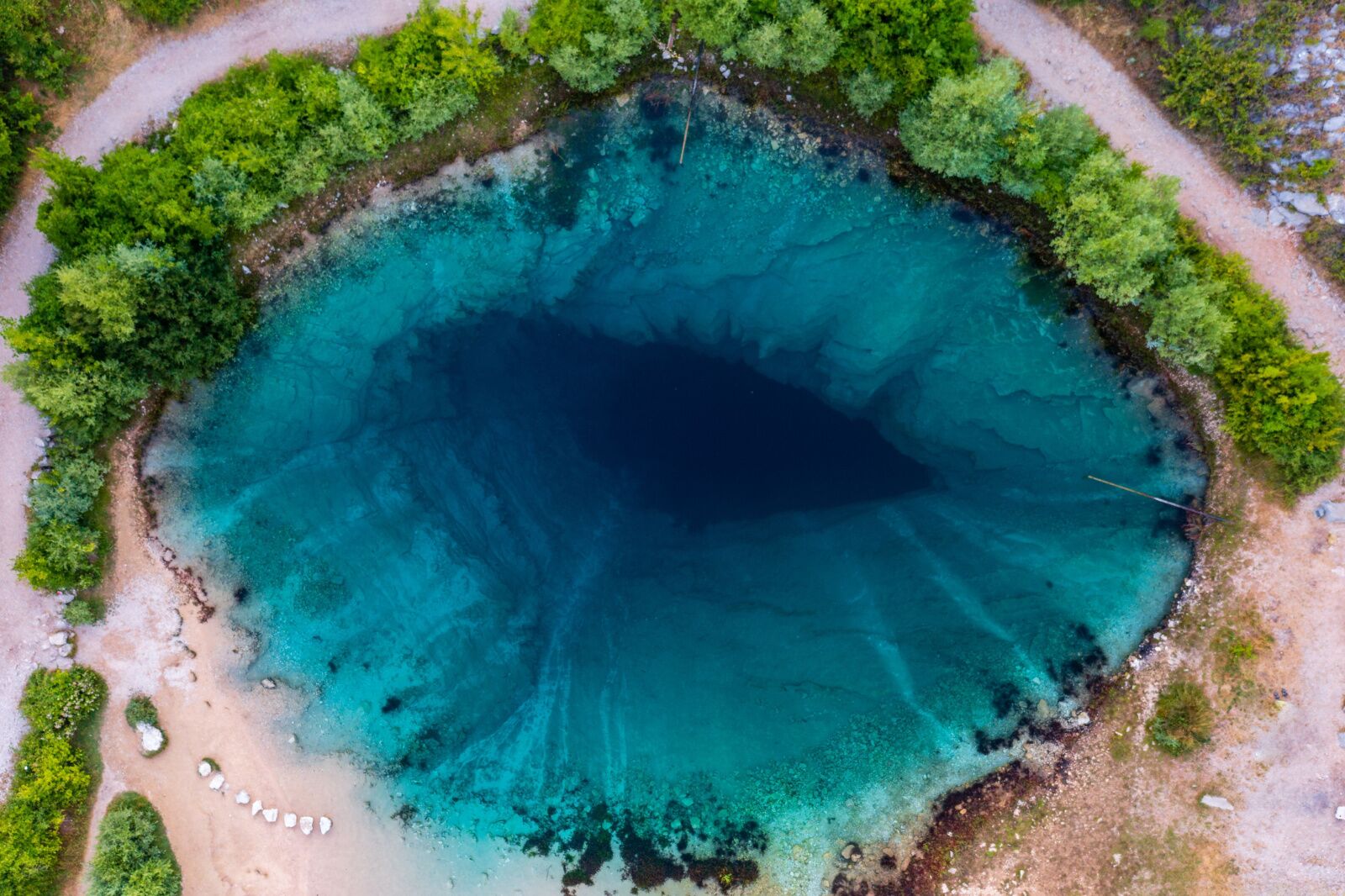The Eye of the Earth, officially called the Izvor Cetine, or the Cetina River Spring, is a natural spring at the base of the Dinara mountain range. It’s fed by the same underground aquifer that feeds the nearby Cetina River, which empties into the Adriatic Sea. The spring is known for its deep blue water and its distinctive eye-shape, which is created by the surrounding rocks.
The Eye of the Earth is a popular spot for swimming, canoeing, and kayaking. It’s also a great place to simply relax and enjoy the natural beauty. There are several hiking trails that lead to the spring, and there’s also a small visitor center where you can learn more about the spring and the surrounding area.
If you’re planning a trip to Croatia, be sure to add the Eye of the Earth to your itinerary. It’s a truly magical place that you’ll never forget.
The rocks around the natural wonder form a perfect circle around the almond-shaped, emerald-green pool. Because it’s quite deep in the center — divers have made it to about 400 feet below the surface — there’s a dark blue shade in the middle that looks exactly like a dark blue eye. It may look shallow from the surface, but if you’re able to see the Eye of the Earth from above, it’s clear it extends deep into the ground.
How to reach the Eye of the Earth
The Eye of the Earth is in the long, southern tip of Croatia, about an hour north of the popular tourist town of Split. if you’re driving there from Dubrovnik, where the primary international airport is, it’ll take you between three and four hours of driving (not including the border crossings).
You can easily rent a car and drive yourself, or join an organized tour and let someone else do the work. Dalmatia Untouched offers tours that include visits to Eye of the Earth as well as lunch and stops at some other nearby beaches and small towns, and Discovery Tours pairs a visit to the natural spring with a local wine tasting.
What to do at Eye of the Earth

Aside from simply admiring its beauty, most visitors to Eye of the Earth come to swim in the crystal-clear waters. Like hot springs, the water comes from beneath the surface, but unlike hot springs, it’s quite cold, even in summer. The spring is also very close to Dinara Nature Park, established in 2021 and known primarily for hiking. The park has 10 peaks nearing 5,000 feet above sea level, which means there are quite a few nearby trails. The most popular is likely the nine-mile Croatia – Dinara hike, which gains more than 4,000 feet on the way to the country’s highest peak.
This region of Croatia, called Dalmatia, also has more than 1,800 miles of mountain biking trails, and nearby Split is known for stunning beaches and ruins from the third and fourth centuries CE. Roadtripping is also one of the most popular activities in this part of Europe, especially if you plan to add in visits to some of Croatia’s fabulous national parks.